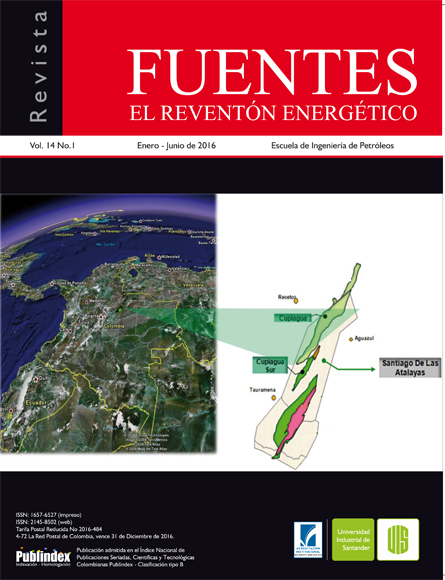
Published 2016-06-24
Keywords
- Production,
- Forecasting,
- Time Series,
- ARIMA Model
How to Cite
Abstract
Production forecasting is a daily activity in Petroleum Engineering, developed by commercial software based in Decline Curve Analysis and Type Curves. These models have failures in two aspects: the first one, models are conditioned to wells producing under pseudosteady state; second one, the production data is fitted to a tendential line, that is extrapolated in the time for get the forecasting. In this investigation, as an alternative to those models, a time series application is proposed, because time series include tendencial, cyclic and stational components of production data. The error between the actual data was compared to the forecasts obtained by conventional methods and results of the time series model. This application allowed to obtain a better history matching of data, evidence that other trends may be in decline (cubic, for example) and increase the accuracy of forecasts generated.
Downloads
References
2. ARPS, Jan J., et al. Analysis of decline curves. Transactions of the AIME, 1945, vol. 160, no 01, p. 228-247.
3. CAMPBELL JR, J. M., et al. Forecasting: Art or Science. En SPE Annual Technical Conference and Exhibition. Society of Petroleum Engineers, 1989.
4. FETKOVICH, Michael J., et al. Decline curve analysis using type curves. Journal of Petroleum Technology, 1980, vol. 32, no 06, p. 1,065-1,077.
5. FETKOVICH, M. J., et al. Useful concepts for decline curve forecasting, reserve estimation, and analysis. SPE Reservoir Engineering, 1996, vol. 11, no 01, p. 13-22.
6. GARCÍA, Á. M. Análisis de series de tiempo. Bogotá: Universidad Javeriana, 2010.
7. GUERRERO, José Felipe Jiménez; FERNÁNDEZ, Raquel Sánchez; ABAD, Juan Carlos Gázquez. La capacidad predictiva en los métodos Box-Jenkins y Holt-Winters: una aplicación al sector turístico. Revista Europea de Dirección y Economía de la Empresa, 2006, vol. 15, no 3, p. 185-198.
8. MANNON, Robert W., et al. Some Aspects Of Production Forecasting. En SPE Rocky Mountain Regional Meeting. Society of Petroleum Engineers, 1964.
9. PALACIO, J. C.; BLASINGAME, T. A. Decline curve analysis using type curves—analysis of gas well production data. paper SPE, 1993, vol. 25909, p. 12-14.
10. POSTON, Steven W.; POE, Bobby D. Analysis of production decline curves. Richardson, TX: Society of Petroleum Engineers, 2008.
11. SCHWARZ, Gideon, et al. Estimating the dimension of a model. The annals of statistics, 1978, vol. 6, no 2, p. 461-464.
12. STERNE, Jonathan AC; SMITH, George Davey. Sifting the evidence—what’s wrong with significance tests? Physical Therapy, 2001, vol. 81, no 8, p. 1464-1469.